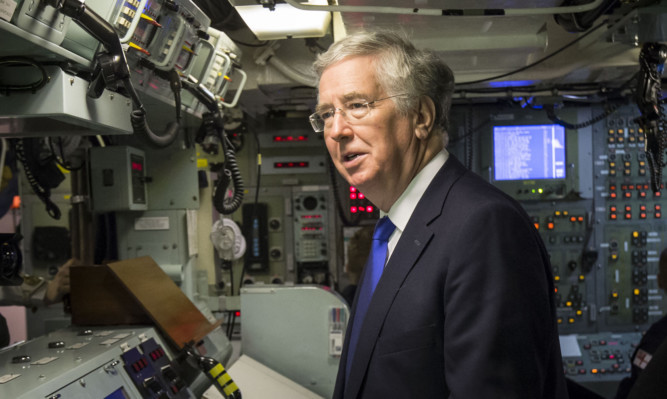A further £642 million will be invested in developing the new generation of submarines carrying the UK’s nuclear deterrent, Michael Fallon has confirmed.
The Defence Secretary said the nuclear deterrent “provides the ultimate guarantee of our security” as he announced the extra spending on the boats which will carry the Trident weapons.
But he was condemned by anti-Trident campaigners for making the announcement before MPs have had a chance to give the final go-ahead for the project.
The Ministry of Defence said the funding will help to progress work on the four new submarines that will begin replacing the Vanguard class, from the 2030s.
The investment will include £225 million of investment for new facilities at BAE Systems in Barrow-in-Furness, where the submarines will be assembled.
The Rolls-Royce submarine propulsion plant at Derby is also expected to benefit.
Money will also be invested in the UK/US collaboration on the missile compartment for the boats and around £200 million on “key long lead items” which need to be ordered early in the process.
It takes spending on the project’s assessment phase to £3.9 billion.
A written statement in the Commons said: “In the UK, a number of key suppliers directly support the delivery of the successor submarine programme who, in turn, depend heavily on a network of hundreds of sub-contractors.
“The Government’s further investment in preparation for a four boat Successor fleet should be welcomed by all suppliers as helping to secure vital skills for the UK in the long term.”
Mr Fallon said: “Our nuclear deterrent provides the ultimate guarantee of our security and our way of life. That’s why we are getting on with this investment.
“This money will support further design work, new infrastructure and the purchase of key parts such as engines and gearboxes, as well as jobs across the UK.”
But Kate Hudson, general secretary of the Campaign for Nuclear Disarmament, said: “I ask Michael Fallon, what is the point of a parliamentary vote on Trident if the Government’s going to spend millions on replacement anyway?
“This is completely unacceptable. This is about huge amounts of money being spent on out-of-date technology that will be redundant by the time it is built.
“There is a growing body of evidence which shows that Trident is vulnerable to cyber warfare and attacks by underwater drones.
“The Government appears to be burying its head in the sand – stuck in a 1980s mindset that we are a great power fighting in the Cold War.
“We ask for some objectivity in considering Trident. It is time the Government thought very carefully about the real security threats we face from terrorism, climate change and global pandemics, but also be honest about the very real threat posed by our own nuclear weapons system.”
